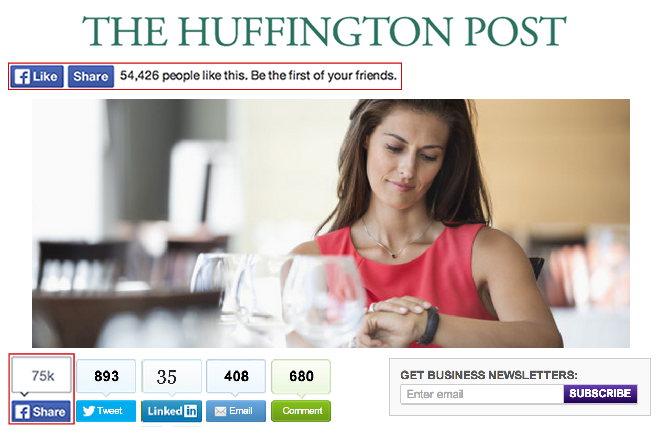Though it’s totally ubiquitous now, the phenomenon of clicking “Like” on any article or video that we find on the web is actually a rather new one in our lives. Facebook launched the “Like” button in 2010 and since then has maintained the same look for the button; now the social network has announced a design change in its popular “Like” and “Share” buttons, which have already begun to be automatically updated on our user accounts.
Are there any pages you visit these days that don’t have the option to share content and post things you like on your Facebook profile? According to a release from the social networking giant, the “Like” and “Share” buttons are seen more than 22 billion times a day and appear on more than 7.5 million websites, and have thus become two important sources of traffic for Facebook, above all the other social networks combined.

The new Facebook buttons have abandoned their old light blue to make way for the same dark blue as the corporate logo, thus calling much more attention. In addition, the classic thumbs-up sign will also disappear, to be replaced by the same “F” that appears on its app icons. The point of this change? Possibly (and obviously) to take away some of the attention from other networks that usually appear alongside Facebook, such as Twitter and Google +.
The person responsible for this change, Ling Bao, has had his head stuck in this project for 6 months. Why so long? The thing is that, in addition to having to create a design that works on all websites for all browsers and with different scales, Bao had to have his design approved by the company’s entire corp of designers, the vicepresidents, the legal team, and Mark Zuckerberg himself.
Besides the design, Facebook is also connecting “Like and Share” so that websites will include both options. Although some people see no difference between them, Bao insists there is an important distinction: The “Like” button post a single notification on the Facebook news feed, while “Share” allows users to add comments before publishing the content, as well as decide where and how to post it.











